Miso pasta is rich and savory with the umami flavors of mushrooms, miso and parmesan. This recipe for Miso mushroom pasta is a one-pot pasta made with spaghetti, mushrooms and white miso. The one-pot cooking method creates a "creamy" sauce for the miso pasta, although there is no dairy added.
This pasta has the same comforting taste and creamy texture of pasta with cheese and butter, but with an added flavor boost.
Miso, mushrooms and parmesan are all ingredients that have "umami" flavor. A combination of salty, nutty, earthy and slightly "funky" flavors give this pasta rich but not overwhelmingly strong flavor. In one word, it's delicious!
This entire recipe is cooked in one-pot. The flavorful pasta cooking water is enriched with shallot, garlic and miso. The water is then absorbed by the noodles as they cook, creating a creamy, starchy "sauce" that coats the noodles with amazing flavor.
This one-pot method is also used to make spaghetti with tomatoes and kale. You can also cook short pasta shapes using the one-pot method, such as penne pasta with mixed frozen vegetables.
Jump to:
Ingredients & Substitutions

Pasta: This recipe is written for spaghetti noodles, but you really can use almost any type of pasta. The ingredients and one-pot cooking method stay the same, although the pasta cooking time might vary slightly for different shapes of pasta.
Miso: You need to use white or yellow miso to make this pasta. Red miso cannot be substituted because the flavor is stronger and saltier. If you buy miso just for this recipe, don't worry, it will stay fresh in your refrigerator almost indefinitely.
You can also use miso paste to flavor recipes like Instant Pot mushroom barley soup with miso and couscous sweet potato salad with lemon-miso dressing or miso butter sweet potatoes. You should also try easy miso butter salmon!
Mushrooms: I often use button/cremini mushrooms because they are easy to find and affordable. However, shiitake, oyster, chanterelle or portobello will also work.
Unsalted butter: It's best to use unsalted butter for this recipe because salted butter might add too much saltiness (miso is also salty).
I have not tested olive oil with the recipe, although my educated guess is that you can substitute olive oil for the butter and the recipe will still turn out well. Butter is the first choice because butter tends to taste best with miso and gives the pasta a richer flavor and texture.
White wine: Adding a little bit of white wine elevates the flavor of this dish. It's not absolutely necessary, but I really recommend adding it if you can. You can substitute dry or extra-dry vermouth.
Miso Mushroom Pasta Step-by-Step Instructions
This is a fairly simple and fast recipe. You basically just saute shallot, garlic and mushrooms and add a splash of white wine. Then, whisk miso into boiling water and pour the water over the pasta. Boil the pasta in the miso water for about 9 minutes until all of the water is absorbed. Top the pasta with cheese and it's ready!

Step 1: Saute shallot and minced garlic in unsalted butter.

Step 2: Add mushrooms and cook until the mushrooms are soft and the liquid evaporates.

Step 3: Add a splash of white wine or vermouth and simmer to reduce.

Step 4: Add dry pasta.

Step 5: Whisk miso into boiling water then pour the water over the pasta. Use tongs to move the noodles around while they cook in the boiling water, so they don't stick together.

Step 6: Boil the pasta for about 9 minutes, stirring frequently, until the noodles are al dente and all of the water is absorbed.

Step 7: The starchy pasta water, butter and miso turn into a flavorful sauce that coats the noodles.

Step 8: Finish the dish with a generous amount of parmesan or Pecorino Romano cheese. Let the pasta sit with a lid for a few minutes before serving.
For detailed instructions and ingredient amounts, see the recipe card below.
Expert Tips
Use the right-sized cooking vessel: Use a wide (at least 12-inch) deep saute pan or an oval Dutch oven to cook the pasta. It should have a lid and be long enough that dry spaghetti noodles can lay flat. A sauté pan is ideal because it's wider and the mushrooms will have more room to cook evenly.
Cook mushrooms in two batches: If there are fewer mushrooms in the pan, they will cook faster, brown nicely and the moisture they release will evaporate faster.
Additional Ingredients
If you want to add even more flavor, you can add one or two flavor-enhancing ingredients to miso mushroom pasta.
- Soy sauce or tamari - Add a tiny bit after the pasta is cooked for more salty flavor
- Fish sauce - This adds a very funky, salty flavor. Just add a tiny bit!
- Sherry vinegar, white wine vinegar or lemon juice - A little sherry vinegar, just a teaspoon, for acidity to brighten the flavor. You can also add white vinegar or add a squeeze of lemon.
- Fresh herbs such as thyme leaves or chopped parsley - For color and flavor.
- Red pepper flakes - For a spicy little kick.

Recipe FAQ
Miso is often described as having "umami" flavor, a mix of salty, sweet, toasted, earthy and slightly funky flavor.
Miso is a fermented soybean paste that's made by inoculating soy beans with a type of mold called koji. The enzymes in koji break down the soybeans into a paste. Most often miso is used to flavor soup broth, such as miso soup or ramen, but you can use miso in many ways. Try it as a flavor boost for stews, pan sauces, stir-fries, marinades, beans and salad dressings. You can also mash butter and miso paste together with a drizzle of maple syrup to make miso butter, a delicious topping for potatoes and roasted vegetables!
The color and flavor of miso depends on where it’s made and the fermentation process. Red miso paste has a darker reddish color and has a stronger flavor than white or yellow miso. White and yellow miso are more similar and interchangeable and have a sweeter, milder flavor.
You can store miso in an airtight container in the refrigerator indefinitely.
Yes, you can simply leave the mushrooms out and make plain miso pasta.
This pasta has the creamiest texture right after it's made, but leftovers can be kept in an airtight container for several days. To reheat the pasta, add a drizzle of water and then reheat the pasta in the microwave until warm. Add more grated parmesan before serving.
No, there is no cream added to this pasta. The creamy texture comes from the cooking method and the use of butter, miso and parmesan.
More Miso Recipes
📖 Recipe
Miso Mushroom Pasta
Miso mushroom pasta has a rich, savory flavor with the umami flavors of mushrooms, miso and parmesan. The one-pot cooking method creates a "creamy" sauce for the miso pasta, although there is no dairy added.
- Prep Time: 18
- Cook Time: 30 minutes
- Total Time: 48 minutes
- Yield: 4 servings 1x
- Category: Pasta
- Method: Boil
- Cuisine: American
- Diet: Vegetarian
Ingredients
- 4 tablespoons unsalted butter
- ¼ cup finely chopped shallot
- 2 garlic cloves, finely chopped
- 1 pound mushrooms, thinly sliced
- ¼ cup white wine or dry/extra-dry vermouth
- ⅓ cup white or yellow miso
- 4 ½ cups water
- 1 pound spaghetti
- 1 cup grated Parmesan cheese and/or Pecorino Romano cheese
- Optional: fresh thyme or parsley for garnish
Instructions
- To make this pasta, use an oval Dutch oven or wide, large skillet with a lid. The pot or skillet should be wide enough for spaghetti noodles to lie flat.
- Over medium heat, melt the butter then saute the shallot until soft, about 3 minutes.
- Add the garlic, saute 30 seconds more.
- Add the mushrooms.
Note: If you’re using an oval Dutch oven, add the mushrooms in two batches. If you add them all at once the mushrooms will be crowded and take too long to soften. When the first batch is soft, add the remaining mushrooms. - Saute the mushrooms until they are soft and the moisture has almost entirely evaporated, about 8 minutes.
- Once the mushrooms are cooked, add the white wine and simmer to reduce, about 2 minutes.
- While the mushrooms cook, bring 4 ½ cups of water to a boil in a separate small pot or electric kettle.
- Whisk the miso into the boiling water until smooth and completely dissolved. Add the boiling water to the saute pan with the sautéed mushrooms.
- Add the spaghetti, laying it down straight and flat. Use tongs to move the spaghetti around gently so it doesn't stick together. As it softens, it will be easier to move.
- Bring the water back to a boil over medium-high heat then set a timer for 9 minutes. Use tongs to stir frequently and move the spaghetti noodles around so they don’t stick and clump. Do not put a lid on the pot while it simmers.
- After 9 minutes, taste one of the noodles. It should be tender but still slightly firm, or "al dente." Most, if not all, of the water should be absorbed. If the pasta is till very hard, continue to simmer for another minute or two, stirring frequently.
- When the spaghetti is tender, turn off the heat. Add grated cheese and gently mix it into the pasta.
- Put a lid on the skillet and let the miso mushroom pasta rest for at least 3 minutes before serving.
- Serve immediately while the pasta is still warm. Taste the pasta and add table salt and/or black pepper if needed.
Notes
Use the right-sized cooking vessel: Use a wide (at least 12-inch) deep saute pan or an oval Dutch oven to cook the pasta. It should have a lid and be long enough that dry spaghetti noodles can lay flat. A sauté pan is ideal because it's wider and the mushrooms will have more room to cook evenly.
Cook mushrooms in two batches: If there are fewer mushrooms in the pan, they will cook faster, brown nicely and the moisture they release will evaporate faster.
Pasta shape: This recipe can also be made with other pasta shapes. The recipe stays the same, but you might have to adjust the cooking time slightly. Some pasta shapes will be tender faster and some might take a minute longer to cook to al dente.
Adding white wine or vermouth is optional, but does elevate the flavor of the dish.
This pasta has the creamiest texture right after it's made, but leftovers can be kept in an airtight container for several days. To reheat the pasta, add a drizzle of water and then reheat the pasta in the microwave until warm. Add more grated parmesan before serving.

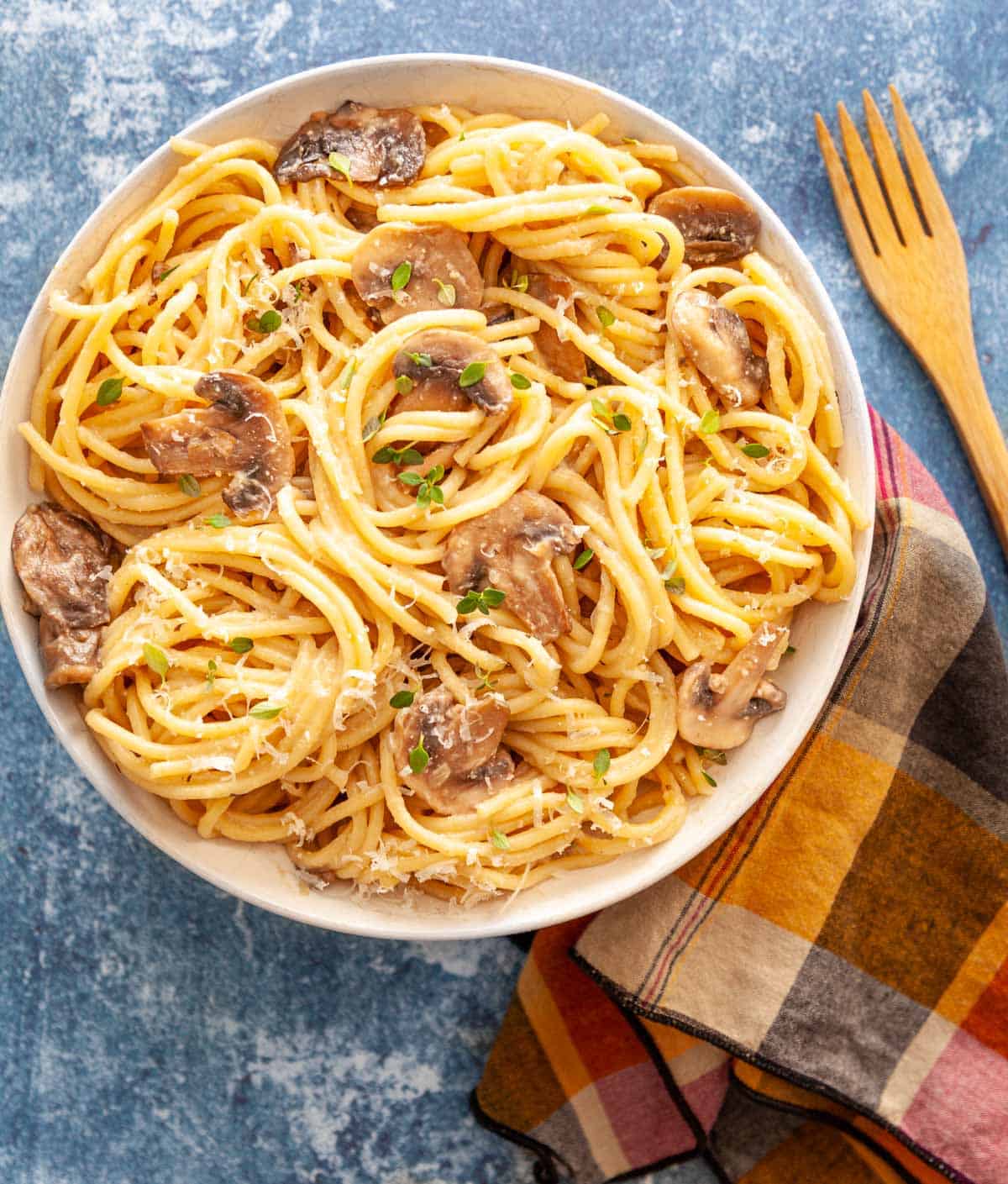

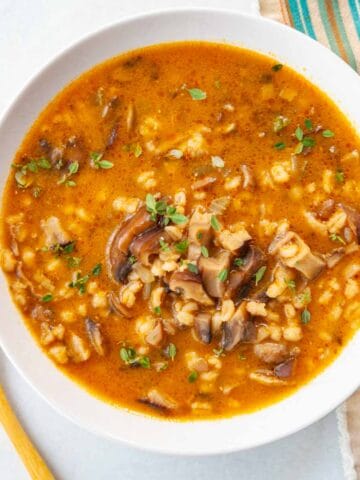
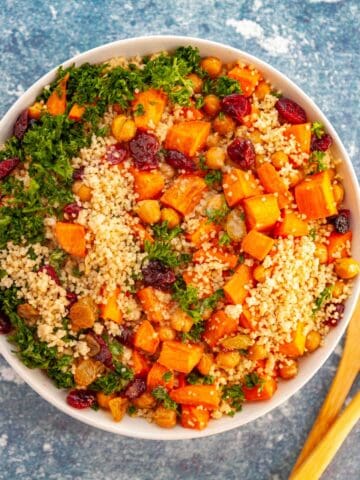


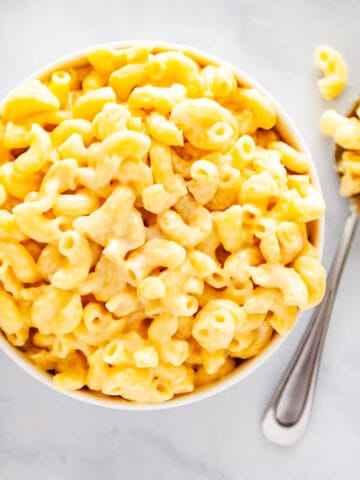
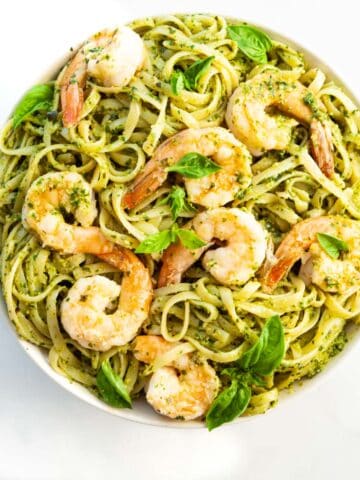

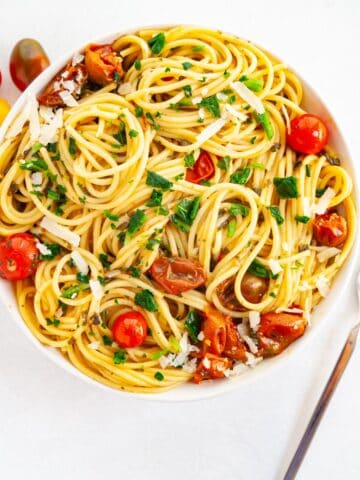

Jen
This was the first time I tried miso in a pasta recipes, and I really love it! The miso flavor is subtle but adds real depth to the flavor.